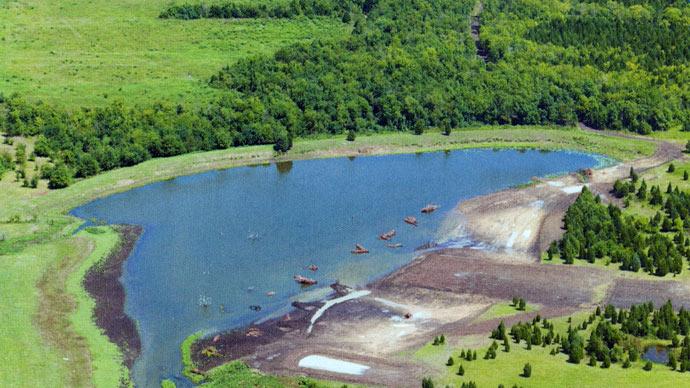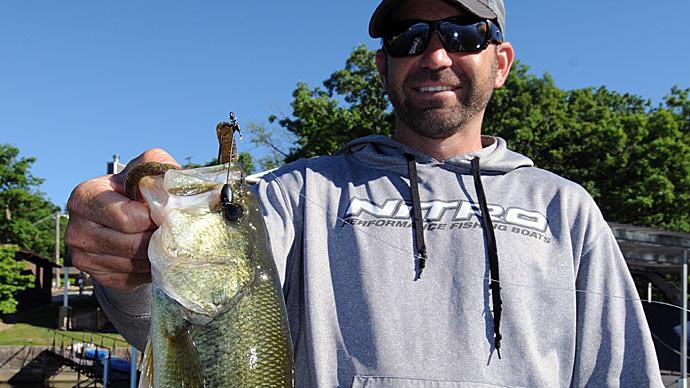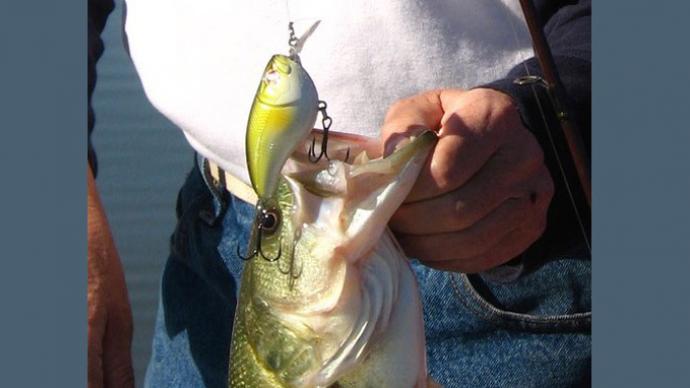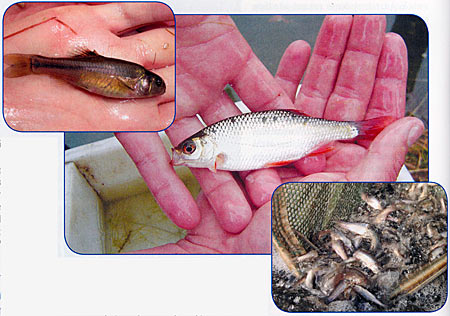
The Brazos River is the longest river in Texas. Author John Graves wrote about it in his popular book, Goodbye to a River, published in 1960. In some circles, Graves is considered a pioneer in environmentalism. I read that book twice, and I'm thinking about reading it again. It drew some profound conclusions about building dams on a river—his river.
Yours truly, as a young teenager in the late 1960's and early 70's, found my passion for fish in a stretch of that winding river, between the towns of Granbury and Glen Rose, west of Fort Worth, in Mitchell Bend. That's also where I inadvertently got my first lessons about minnows. A minnow is just a minnow, right? Maybe. Maybe not.
In the river, minnows were considered a pretty good bait for catching catfish and an occasional bass, but it didn't take long to see that some minnows were more attractive as bait than others. It also didn't take long to see that some species of minnows dominated the river while others seemed sparse.
Daddy taught us how to trap minnows with a quart-sized Mason jar, with a clear plastic cone glued inside the lid rim. We'd add a pinch of corn meal, go find a riffle or rapids, and set the jars with a string tied around the jar top, with a bobber on it, so we could find it later. Daddy always said, "Face the open end of the jar downstream. Minnows swim upstream."
He was right. Most of the time, we'd have ajar full of spot-tailed shiners. On some occasions, we'd catch a few red horse minnows. Those were beautiful, shiny little creatures, never larger than three inches, and radiating their beautiful red fins and blue stripes near the gills. Those were the best bait, even though they didn't live long on a hook.
On a rare occasion, we'd trap a curious little fish, a rainbow-colored little two inch beast that swam in bursts. We had no idea what it was, but later in life, I found out it was a darter—a loner minnow that lives under rocks and feeds on some magical stuff called detritus. I didn't learn about that word until college.
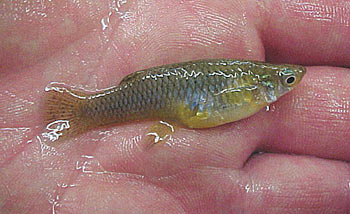
As a teenager, I recognized these varieties of minnows as different, but didn't really understand the significance of their differences. Now, as a professional fisheries biologist (whatever that means), I see minnows in a totally different perspective than that winnowing teenage minnow trapper looking for the perfect bait to catch a wily old catfish.
So, as I wax somewhat philosophically on my younger years, I'll offer a few take-home points you need to know about minnows.
First, minnows are just that—minnows. Baby bluegills aren't minnows, although they start off pretty small. People assume that minnows are small fish. If that's true, then technically baby grass carp are minnows, for heaven's sake. They grow huge.
For the sake of our thought process, this whole story started off as a casual question around a campfire where some people were sharing the virtues of their favorite IPA's while being mesmerized by dancing flames. I'm no expert about IPA's, and never will be, but when the conversation came around to ponds, and someone asked, "Should we stock some different minnows in our pond to build a better food chain?" I had a few things to say. Here's how the discussion unfolded.
Minnows are tools in our pond management toolbox. If you are thinking about stocking any species of minnows, it's a smart idea to learn all you can about the species. For example, fathead minnows are readily available all over the nation from a variety of suppliers. Hatcheries, bait dealers, live haulers, and trappers are common sources of fathead minnows. But, should you buy them? Fathead minnows are slow moving, rapidly reproducing little creatures that live in the same niche as bass and bluegills. Fatheads can live anywhere in the USA, and they spawn by laying eggs on the underneath sides of firm objects. The male guards the nest, and they do that until they run out of gas and energy. Male fatheads don't have a long lifespan. They are used in pond management for two fundamental purposes. Purpose One is to build the food chain before bass are stocked. This then promotes the first year's growth of a newly stocked bass pond. Purpose Two is to diversify the food chain for channel catfish in a catfish-only pond. Fathead minnows don't grow larger than 2/4-3 inches. That's it. For their purpose, fatheads are perfect. But, try to stretch them into anything more, and you might as well try to rope a cloud.

"How about golden shiners?" one guy asked.
Golden shiners grow as large as 7-8", are fast moving, schooling fish. They're also nest raiders. Are they good to stock in ponds? Some biologists swear by them, others swear at them. Golden shiners are primarily used as fish bait sold in bait stores near the lake. But, those biologists who use them in pond management will tell you they fill a niche, reproducing heavily in spring, and their offspring will feed lots of bass into the summer. What about that nest-raiding thing? Adult golden shiners love to pick off eggs in bluegill, redear, and even largemouth bass nests, if they can get away with it. They are actually predator fish, limited by their tiny mouths. The first time I saw one was on the end of an ultra light while fishing for panfish. The seven-inch beast attacked a hunk of red wiggler under a bobber. In my opinion, the best use for golden shiners in pond management is for ponds that tend to draw down part of the year. Golden shiners can survive a drawdown. Their quickness helps.
Last year at Pond Boss World Headquarters, we received a call for some of those red horse minnows mentioned earlier. This pondmeister wondered if there was a source to buy those pretty little creatures. A quick tour through the University of Google didn't show any suppliers, and I've personally not ever heard of anyone selling them. I explained, "Fish farms don't raise what doesn't maximize profits and production." As gorgeous as they are, they thrive in moving waters, not static environments such as a fish culture pond. So, the only places they may be found are bait stores that trap their own bait, if those still exist.
What about other minnows, maybe fish you can seine or trap from a nearby river or creek? Gambusia are a good choice, where they are native. Also called mosquitofish, these tiny live- bearers live around the edges, feeding on mosquito larvae and other tiny bugs.
In creeks, you'll find locally native minnows.
There aren't many that might cause damage to an environment, but the biggest nugget of advice is to be sure to inspect your catch before introducing any living creature into your precious waters. Remember this, all fish start off small. Depending on the time of year, if you seine a stream, creek, or river, you can just as easily catch baby carp as you can a banded topminnow. As you think about adding these fish, be absolutely sure of the species. Learn about those different fish and how they live. Then, you can deduce the impact on your pond and its fishery. Why introduce a small fish that eats aquatic insects as large as dragonfly larvae? Would you rather have the dragonflies or a fish species that offers nothing to the food chain? You wouldn't. But, if you live near waters where fathead minnows or golden shiners are prolific, they certainly could be used.
While we need certain types of minnows for specific circumstances, that doesn't necessarily mean we should stock any type we find. If those fish play a role in your ecosystem, by all means stock them. If they do no harm, stock them. But, your job is to learn before you do.
After all, a minnow is a minnow—or, is it?
Reprinted with permission from Pond Boss Magazine

